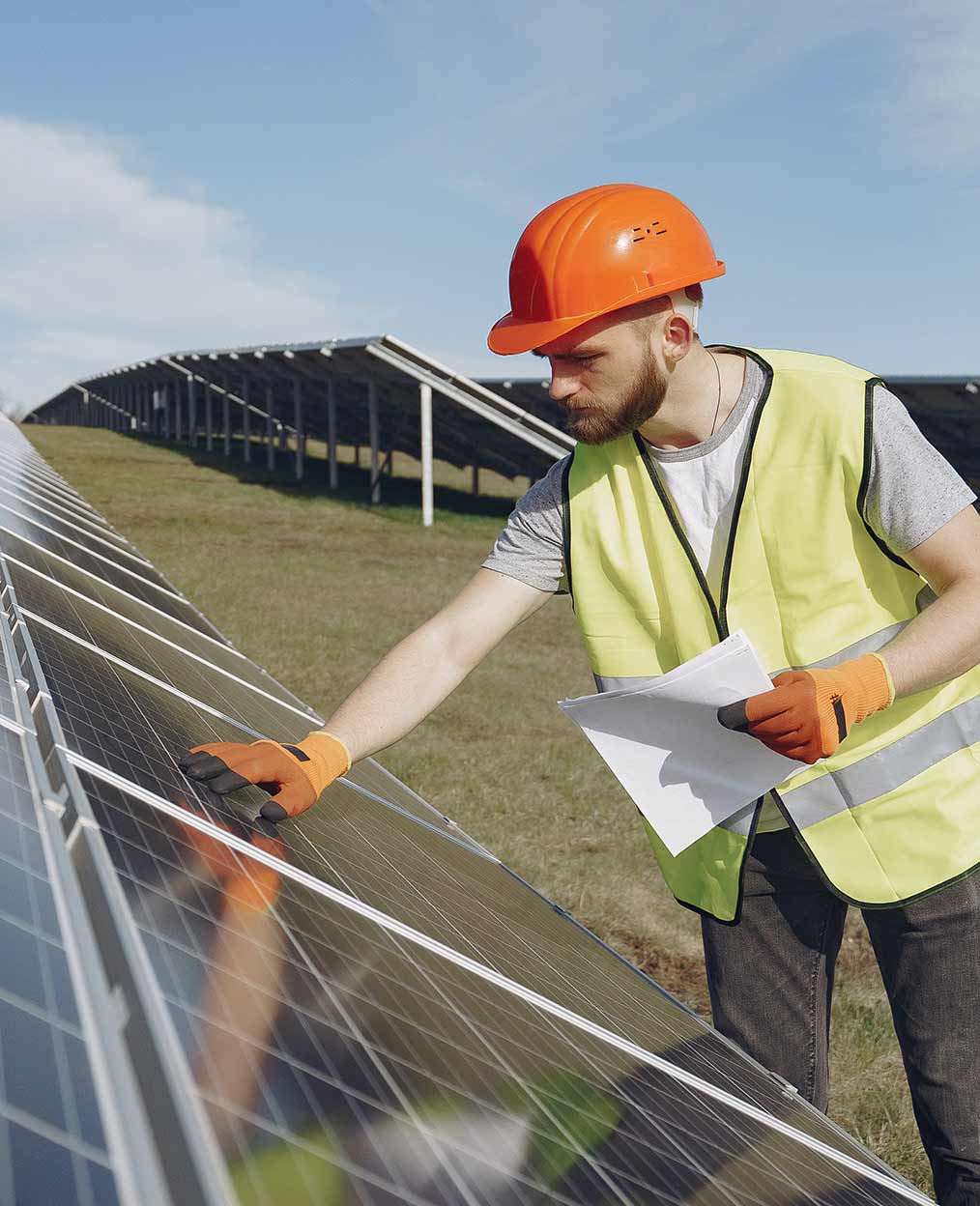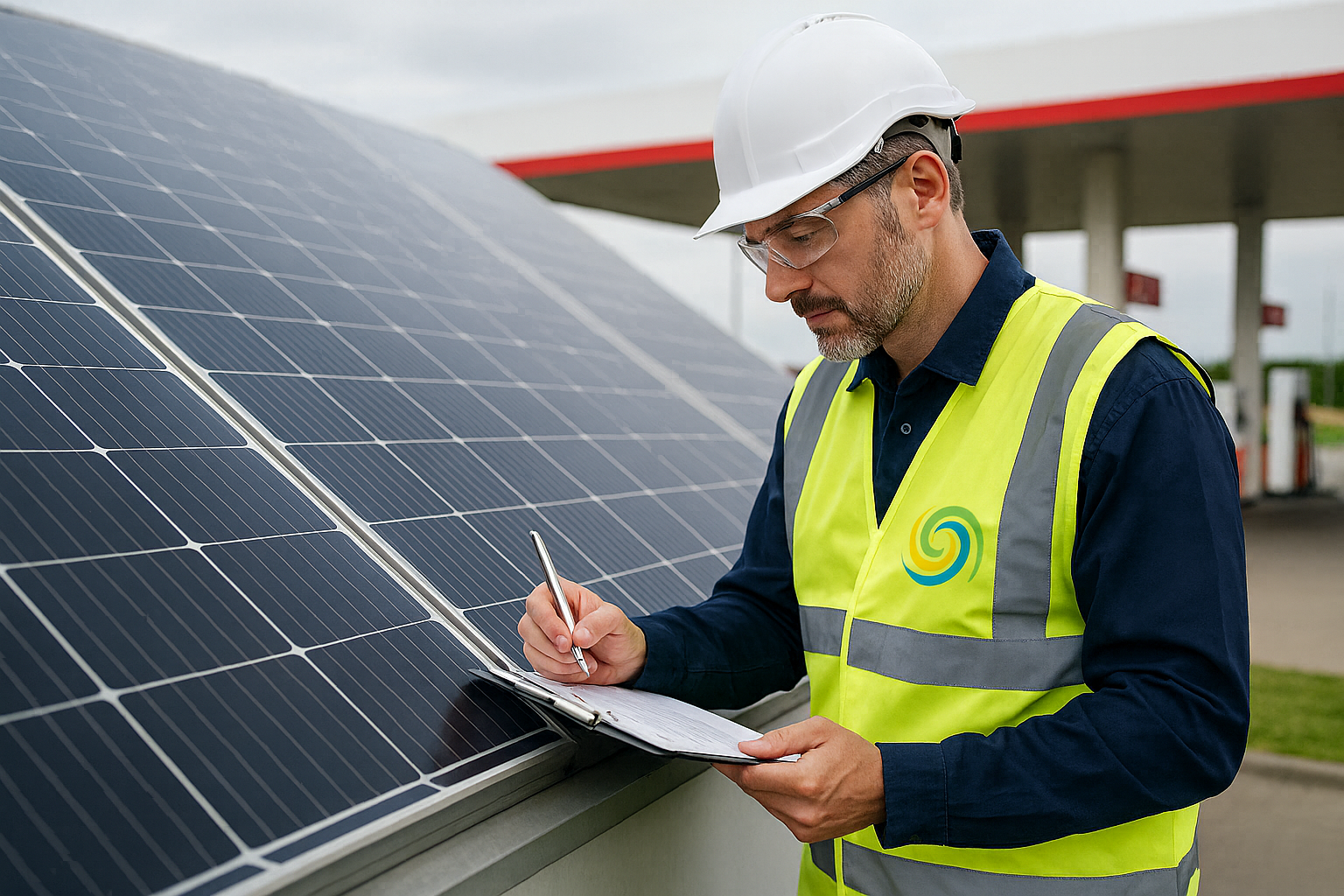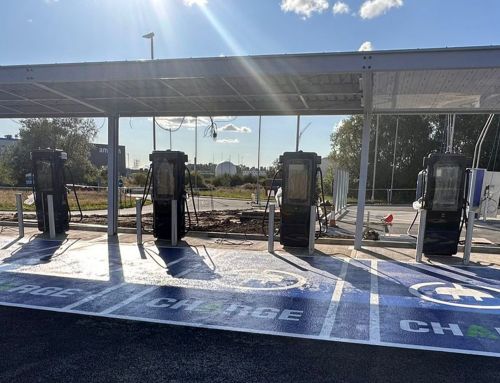Summary:
This article explains how to manage solar PV fire safety on petrol station forecourts, focusing on the practical steps retailers can use to reduce risk. It outlines why PV fires occur, how design choices influence safety, what checks matter most, and how emergency isolation systems can be improved. By following these measures, retailers can confidently install and operate solar PV systems on forecourts.
The first article in this series introduced the principles of fire mitigation for renewables on petrol station forecourts. It discussed how despite renewables adding complexity, they can still be integrated safely when designed, installed and maintained correctly.
This second article now focuses on solar PV fire safety for petrol station forecourts, expanding on the fundamentals covered in Part 1: Fire Mitigation for Renewables on Forecourts.
Solar PV offers lower energy costs, long-term stability and sustainability benefits. However, because PV systems behave differently from traditional forecourt electrical equipment, retailers must understand the specific fire safety considerations.
Fortunately, these risks are well understood. Therefore, with good design, competent installation, correct equipment selection and clear emergency planning, fire mitigation for solar PV on petrol stations is both practical and effective
Why PV fire incidents occur
Solar PV is a mature and reliable technology. Even so, fire incidents can occur, and they often stem from predictable causes. Research by the Building Research Establishment (BRE) found that 84% of PV-related fires came from:
- DC connectors
- DC isolators
- Inverters
These components handle high-energy DC, and faults can create overheating or arcing. Consequently, DC isolator fire risks in solar PV have become a key focus for standards and insurers.
Furthermore, PV behaves differently from typical forecourt electrical systems:
- PV modules generate electricity whenever exposed to light, even when the fire switch is activated.
- Most arrays are roof-mounted, which affects debris accumulation, heat flow and emergency access.
Because of these differences, solar PV installations on forecourts require tailored safety measures.
If you need broader context, see our guide to Renewable Energy Safety on Forecourts.
Roof and site considerations
Debris accumulation
Firstly, the space beneath PV panels can trap dried leaves, moss and lichen, nesting materials, and dust or wind-blown debris.
This debris can dry out, restrict airflow and act as fuel. As a result, debris accumulation can increase fire risk. On petrol station canopies, airflow is often limited, so PV canopy fire safety becomes especially important.
Firefighter access
Secondly, PV panels can limit visibility and physical access. They may hide fire spread beneath an array or restrict roof access. Therefore, firefighters benefit from clear system information, strong signage and accurate layout drawings.
Mitigation through good design
Good design is the strongest tool for reducing PV fire risk on petrol stations. When done properly, it removes many common failure modes and strengthens overall forecourt PV system safety.
Use quality equipment
Most PV fire incidents stem from poor-quality components or incorrect installation. Therefore, installers should:
- use compliant, recognised brands
- avoid mixing connector types
- install connectors horizontally
- prevent cables from lying in pooled water
- support cables correctly and relieve strain
Each measure reduces overheating, moisture ingress and mechanical stress.
Follow manufacturer recommendations
In addition, every major component — such as the inverter — must be installed exactly as the manufacturer specifies. These requirements cover:
- ventilation
- cable routing and termination
- mounting height
- environmental protection
- firmware updates
- inspection intervals
Manufacturers design protective features around these conditions. Consequently, following their guidance is one of the most effective forecourt solar safety requirements.
Standards and Compliance
Furthermore, solar PV systems on petrol station forecourts must follow the relevant UK standards and guidance. These ensure safe installation, correct electrical protection and compliant hazardous-area design.
Installers should follow:
- BS EN 62446-1 / BS EN IEC 62446-2
- IET Code of Practice for Grid-Connected Solar PV Systems
- BS 7671 (IET Wiring Regulations)
- DSEAR requirements
- RISCAuthority RC62
An explanation of these standards is provided in the footnotes.
This structured approach supports safe solar PV operation on forecourt canopies.
Designing for canopy installations
Finally, when PV is installed above forecourt canopies — often over Zone 1 or Zone 2 hazardous areas — isolation becomes critical.
Retailers should install a linked PV fire switch connected to the main petrol station fire switch. Consequently:
- fuel dispensers switch off
- building electrics isolate
- the PV array stops exporting DC
all through one action. As a result, this improves solar PV fire safety on forecourts and makes emergency response safer.
Routine checks retailers can perform
In addition to design measures, retailers can strengthen safety through routine checks.
Monitor performance
A sudden drop in PV output may signal:
- connector degradation
- cable faults
- inverter issues
- shading from debris
Enable inverter alerts
Most modern inverters offer automatic fault notifications. Therefore, these alerts should be activated and monitored.
Perform visual checks
If visible, retailers can routinely check for:
- debris under the array
- damaged cables
- water pooling
- blocked ventilation
Schedule annual inspections
A competent technician should complete:
- insulation resistance tests
- series resistance checks
- thermographic scans
- inverter inspections
- connector assessments
- roof-based visual inspection
These align with BS EN IEC 62446-2 and identify early warning signs.
Emergency preparedness
Update the fire risk assessment
Firstly, every PV installation should be included in the site’s fire risk assessment.
Inform firefighters
Retailers should provide:
- layout drawings
- isolation point maps
- photoluminescent signage (ideal)
How firefighters tackle a solar PV fire (key points)
Firefighters use a straightforward approach when PV is involved:
- They isolate the system where possible.
Crews activate the forecourt fire switch and the linked PV fire switch (if installed). They still treat the panels as energised. - If sunlight is energising the panels, they can apply PV Stop.
This is a polymer foam that blocks light and reduces panel output, allowing safer access. It can be used early to block light and reduce DC voltage quickly. It does not extinguish the fire but makes the area safer. It does not damage the roof or the panels and can be removed after the fire incident once it is safe to. - Once the electrical hazard is controlled, they tackle the fire directly.
Only after panel output drops do crews apply water or other agents, depending on the fire location. - They ensure the system remains isolated after the incident.
PV may re-energise when exposed to light, so isolation is maintained until a qualified engineer inspects the system.
Conclusion
Solar PV can be installed safely on petrol station forecourts when designed, installed and maintained correctly. The risks are understood and the mitigations are well established. The approach aligns with the strong safety culture already present across forecourt operations.
By selecting high-quality components, following manufacturer guidance, using linked isolation, and completing regular inspections, retailers can integrate solar PV confidently and safely.
To discuss solar PV fire safety, contact Ingeni Renewables Ltd on 01543 728148 or email info@ingeni-renewables.co.uk.
Footnotes – Standards Explained in Plain English
- BS EN 62446-1 / BS EN IEC 62446-2
Define testing, documentation and maintenance requirements for PV systems. - IET Code of Practice for Grid-Connected Solar PV Systems
Provides best-practice guidance on PV design, installation and commissioning. - BS 7671 (IET Wiring Regulations)
Covers electrical safety, DC isolation, cable routing and protective devices. - DSEAR
Ensures PV systems don’t compromise hazardous-area zoning. - RISCAuthority RC62
Insurer-led guidance for reducing PV fire risks in design, installation and inspection.
Related Posts
Make a No-Obligation Enquiry






